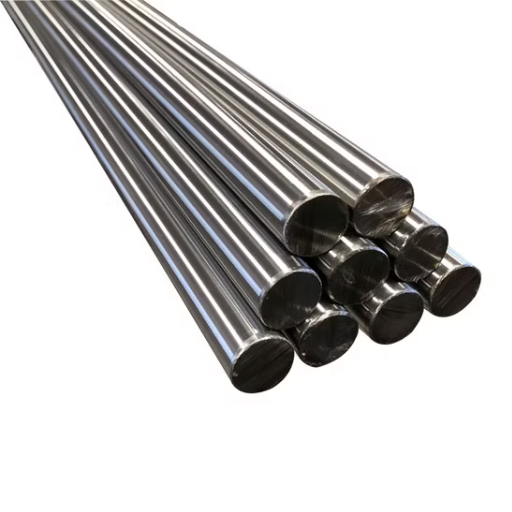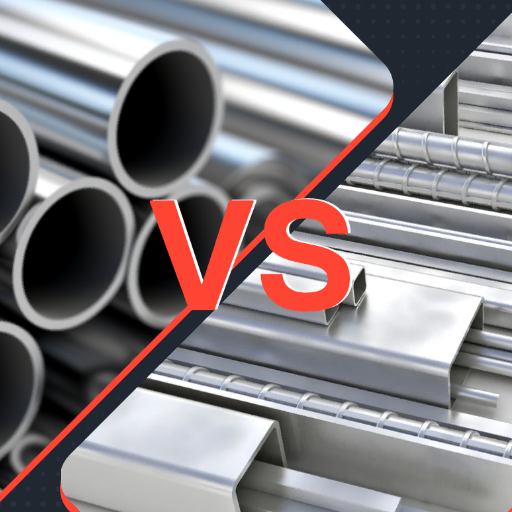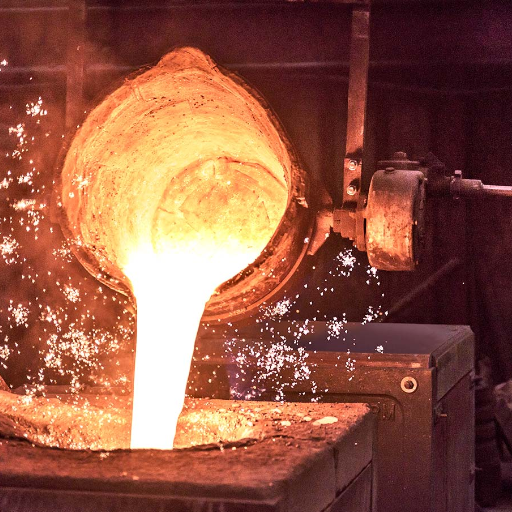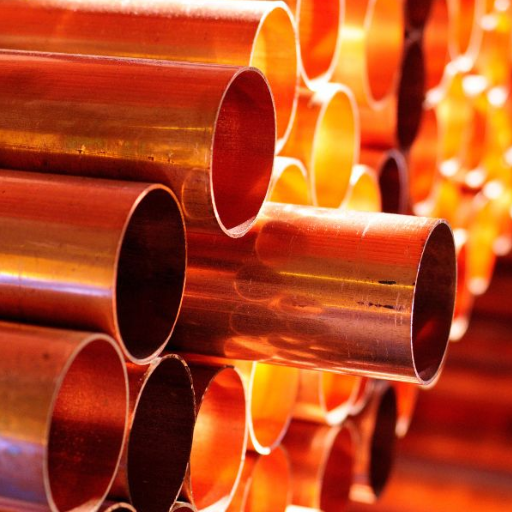Chromium-based steel is essentially “chromium-molybdenum” steel, highly noteworthy for its excellent strength-to-weight ratio, durability, and versatility. Considered an alloyed steel, it now finds application in several industries, ranging from lightweight bicycle frames for serious applications to automotive components for high-performance applications and defence aerospace applications. How, then, does Chromoly steel stand apart among the various categories of steel metals? Why has its acceptance been so huge, and how exactly does the unique composition give rise to the beautiful properties we behold? The article takes an in-depth look at the world of Chromoly steel, unraveling its chemical composition, major properties, and practical applications. If you are a materials enthusiast, an industry player, or just plain curious, you will be able to grasp all that is tag-along to so highly laudable Chromoly steel.
Introduction to Chromoly Steel
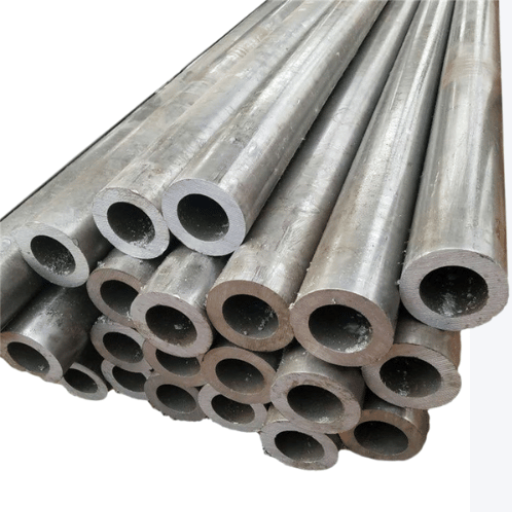
Chromium and molybdenum steels, more often shortened to Chromoly steel, are the medium alloy grades, having maximum strength, great durability, and versatility. The peculiar combination of the alloying elements consists mainly of chromium, which increases corrosion resistance, and molybdenum, which increases toughness and heat resistance. Carbon and iron make up the rest of the composition. Alloying allows a compound to combine light properties with good structural quality. Commonly used Chromoly steels in aerospace, automotive, and bicycle industries can withstand the highest stress and wear, making them the choice for demanding applications.
Definition of Chromoly Steel
The low-carbon alloy steels are chromium-molybdenum low alloy steels, commonly known as Chromoly and also by the number 4130. This material has superb mechanical properties of tensile strength, ductility, impact resistance, and toughness, which are enhanced by its chemical-physical composition. Generally, this steel contains chromium from 0.8 to 1.1%, molybdenum around 0.15 to 0.25%, and carbon from about 0.28 to 0.33%, with the majority remaining as iron. Chromoly steel is heat treatable, meaning that one can further strengthen its hardness and corrosion resistance while promoting the lightweightness characteristic. Apart from possessing a high strength-to-weight ratio, it offers great machinability; hence, wherever a compromise has to be made between lightness and mechanical reliability, it finds demand for these applications. It finds a varied field of applications from high-performance aircraft to roll cages to racing car chassis and bicycle frames, where structural properties in dynamic loading are the prime factors.
History and Development
With the ever-evolving need for mechanical performance and material economy, it follows that specialized lightweight materials generally form the strongest impetus behind such developments, especially in metal alloys. Before the advent of computational methods, metals were produced simply from trial-and-error recipes whereby scientists would try out various mixtures with the hope of arriving at certain properties. This process has since been updated since materials science introduced computer modeling and simulation, wherein the behavior of potential alloys under given conditions can be predicted before their actual synthesis. Advancements today involving nanotechnology and additive manufacturing have allowed much finer control of material properties and structural integrity on a microscopic scale.
One of the procedures on aluminum evolution in aerospace would be the addition of rare earth elements and tailored heat treatment, greatly imparting corrosion resistance, impact strength, and fatigue life. In fact, the evolution of the titanium alloys has been very wide, allowing the newest grades to grant more biocompatibility for medical implant uses as well as improved thermal stability for high-temperature industrial purposes. The above milestones depict the dynamic progression of materials engineering and how this field utilizes the latest technology to respond to ever-demanding performance specifications across sectors.
Importance in Various Industries
Titanium alloys are the essential backbone of many industrial spheres while having distinctions of the highest strength-to-weight ratio, corrosion resistance, and biocompatibility. Within the realms of aerospace, superior titanium manufacturing applications are in critical components such as turbine blades, engine housings, and airframe structures, allowing aircraft to be lighter and thus more fuel-efficient. Similarly, these properties render titanium an ideal candidate for surgical implants, orthopedics, and dental applications as this rare element has resistance against bodily fluids and can osseointegrate. In contrast, the automotive industry utilizes titanium within exhaust systems and connecting rods in high-performance vehicles to increase durability while accounting for lower weight. Marine applications for titanium include the construction of submarine hulls, desalination plants, and offshore equipment, taking advantage of its resistance to saltwater corrosion. The fast development of additive manufacturing keeps expanding the scope of titanium, allowing the production of complex designs at an exact level and cost-effectively meeting current industry standards.
Composition and Properties of Chromoly
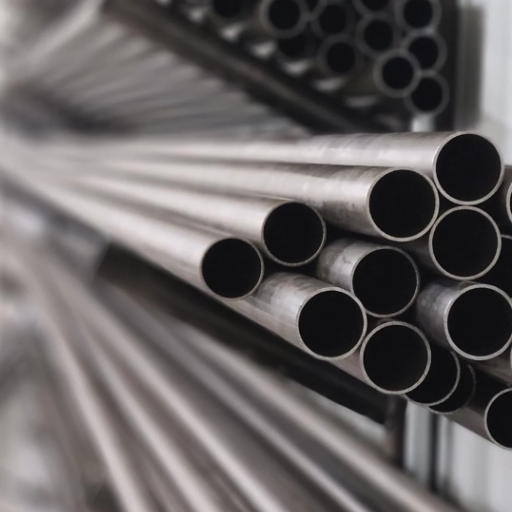
Chromoly steel, schemed under AISI 4130, is a low-alloy steel of which the major portion consists of iron, and chromium (0.8-1.1%) and molybdenum (0.15-0.25%) are the two primary alloying elements. This enhances the material in terms of abrasion resistance and strength against wear, fatigue, and impact. Chromoly is very favored for its excellent strength-to-weight ratio, allowing it to maintain the ductility required for framing applications such as in bicycle frames, aircraft structures, and automotive components. Considerable weldability and machinability make fabrication with Chromoly easy, thus retaining its structural strength.
Understanding Chromium and Molybdenum
Individually or in compositional conjunction through a secondary virtue of refinement, chromium and molybdenum contribute in substance to the enhancement of the material properties unique to its high performance. Chromium is an element with a number of qualities that affect corrosion resistance as well. It acts by creating on the surface of metals a very thin and impervious oxide layer. In this way, this passive layer hampers further degradation by oxidation, thus putting chromium into the ingredients for stainless steels or corrosion-resistant coatings. Chromium is equally used to increase hardness and wear resistance, which enables excellent performance and is used in tools, dies, and applications in cutting-edge technologies.
By contrast, molybdenum entails thermal stability and strength at high temperatures. It can withstand considerable mechanical stress and thermal degradation at extremely high temperatures, which are required by end uses in power plants, jet engines, and oil and gas exploration equipment. While being combined with chromium in increasing tensile strength, molybdenum resists creep and corrosion in alkali, acid, or chloride-containing environments. Hence, the combined and joint action is employed in superalloys and advanced steel grades, which are uniquely placed in industries where permanent and high-performance materials are highly desired.
Characteristics of Chromoly Tubing
- High Strength-to-Weight Ratio
Chromoly tubing maintains less weight than other tubing varieties while also offering untold tensile strength; thus, the industry for aerospace, automotive, and cycling exploits it to the fullest.
- Tensile Strength: It generally lies between 80,000 and 100,000 psi but may go higher depending upon the heat treatment.
- Density: Approximately 7.85 g/cm³; hence, it is very lightweight.
- Enhanced Toughness
The presence of molybdenum gives it great toughness to the effect that Chromoly tubes can suffer much mechanical stress before cracking even when placed under very harsh environmental conditions.
- Superior Weldability
Being an alloy steel, Chromoly tubing is weldable without compromising the structural integrity of the welded joint, as far as a proper post weld heat treatment shall have been applied.
- Corrosion Resistance
- High Temperature Performance
Comparing Chromoly to Other Alloys
|
Parameter |
Chromoly |
Aluminum Alloys |
Stainless Steel |
Titanium Alloys |
|---|---|---|---|---|
|
Density |
Moderate; ~7.85 g/cm³ |
Lightweight; ~2.7 g/cm³ |
Heavy; ~7.9 g/cm³ |
Low; ~4.5 g/cm³ |
|
Strength-to-Weight Ratio |
High |
Moderate to high |
Moderate |
Exceptionally high |
|
Corrosion Resistance |
Moderate, requires coating |
Low, may require treatment |
Excellent without coating |
Excellent, inherently resistant |
|
Thermal Conductivity |
Low |
High |
Low |
Low |
|
Cost |
Affordable |
Low to moderate |
High |
Very high |
|
Machinability |
Good, easily weldable |
Excellent, easy to machine |
Moderate, specialized tools needed |
Difficult, requires expertise |
|
Fatigue Resistance |
High |
Moderate |
Good |
Excellent |
|
Applications |
Automotive, aerospace, bicycles |
Aerospace, construction, vehicles |
Marine, medical, food-grade |
Aerospace, high-end sports equipment |
|
Operating Temperature |
Handles high temperatures well |
Poor at high temperatures |
Excellent under high heat |
Outstanding in extreme conditions |
Common Uses of Chromoly Steel
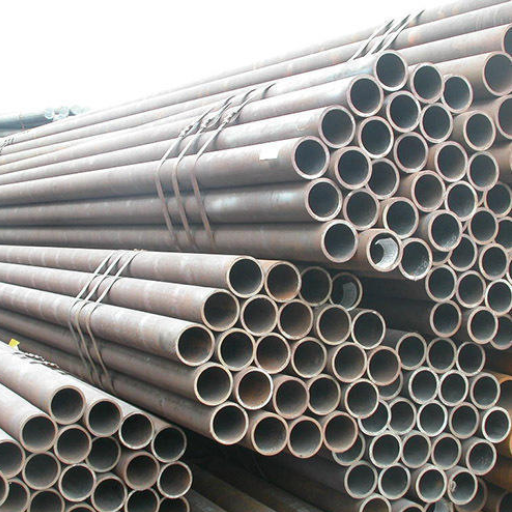
- Aerospace Industry
Chromoly steel is usually used to construct aircraft structures due to its great strength-to-weight ratio and corrosion-fatigue resistance. The very nature of its application under high stress, vibration and fatigue loads renders it ideal for flight-critical assemblies such as fuselages and landing gears.
- Automotive and Motorsports
Chromoly steel is considered the main ingredient for fabrication of roll cages, chassis, and suspension systems to be used in high performance applications. Because of its lightweight property and structural integrity, it is a good candidate for racing use, and enhances handling and safety. It has been established by studies that structures made of Chromoly tubing could weigh 30% less than traditional steel without compromising strength.
- Bicycle Manufacturing
Chromoly is frequently used in the very high-end bicycle frames, primarily for the flexibility of Chromoly and its ability to sustain high stresses without permanent deformation. Benefiting a cyclist, Chromoly offers better ride quality, as it absorbs vibrations better than aluminum or carbon fiber, and maintains such high durability.
- Oil and Gas Drilling Operations
Chromoly stocks like 4140 and 4130 are used extensively in drilling tools, pipelines, and fittings. Guaranteed tenacity and toughness in oil extraction processes under extreme pressure and temperature environments ensure better performance.
- Heavy Machinery and Construction
For safety and durability purposes, structural elements of cranes, excavators, and heavy machines are usually made of Chromoly steel. It has good endurance depending on repeated loads and high-stress construction. Because of these properties, Chromoly steel is indispensable in construction work.
Use in the Automotive Industry
- Chassis and Frames
Chromoly steel is commonly used in the construction of chassis for a lot of high-performance and racing vehicles. This steel has good structural components that provide higher structural integrity but without adding a lot of weight, which is important during high-speed maneuvers and collisions. In fact, Chromoly steel 4130, being perhaps the most common grade, has a tensile strength of around 97,200 psi, making it an excellent choice for vehicle structures.
- Roll Cages
Roll cages for professional motorsports and custom-built vehicles are often constructed from Chromoly during its manufacture because of its performance under high-impact influences. The lightweight design of the chromoly maintains weight restrictions in racing while supporting driver safety.
- Drivetrain Components
Drive shafts, gear sets, and axles stand to gain the torsional stress resistance of Chromoly steels. High fatigue resistance promises that Chromoly steel will last even more in vehicles designed for the heavy-duty environment or off-road scenarios.
- Suspension Systems
Control arms and suspensions make use of Chromoly steel to maintain alignment reliability and absorb loads through dynamic agility. To directly induce better handling, they assist in alleviating long-term maintenance.
- Aftermarket and Custom Parts
Role in Aerospace and Construction
One of the most used materials for aerospace engineering because of its strength-to-weight ratio and ability to withstand fatigue is Chromoly steel. Among the highest performance structural applications for structural assemblies in airframe landing facilities and control mechanisms, where working under stress is crucial, is its other area of application. The maintenance of integrity under extreme situations guarantees the safety and soundness of aerospace systems.
Chromoly steel finds essential applications in construction wherever durability and the structural integrity of the work are required. From load-supporting frames to areas high on stress in bridges and commercial buildings, the combination of tensile strength and flexibility enables variable loads and seismic activities to act upon chromoly. Beyond existing treatment, even heat treatments have improved resistance to wear and corrosion, hence making infrastructure projects last longer and become more economical.
Advantages of Chromoly Over Other Materials
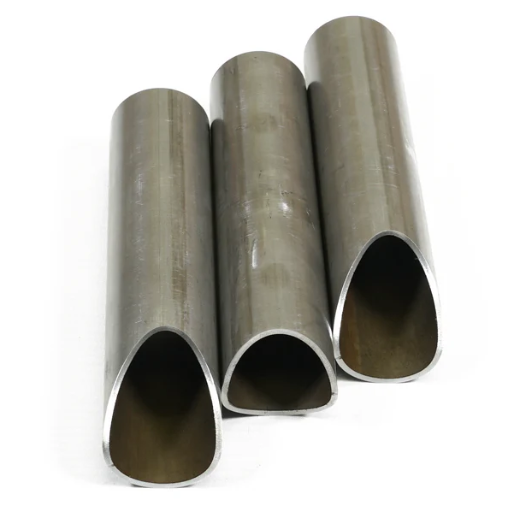
- Exceptional Strength-to-Weight Ratio
When considering weight reduction while ensuring structural integrity, chromoly offers excellent serviceability in structural applications such as aerospace and automotive engineering. Hence, chromoly ranges between 90,000 and 150,000 psi in tensile strength, thereby further much strength than mild steel.
- Improved Toughness and Ductility
The fourth element in the series tells that the addition of chromium and molybdenum increases toughness and ductility, which is especially necessary for dynamic or cyclic loading. These properties impart the ability to deform rather than failing suddenly to the chromoly steels when subjected to stress and thereby save it from catastrophic fractures.
- Corrosion and Oxidation Resistance
Chromium content in chromoly steel allows it to develop a protective oxide layer that guards in rust and corrosion. While it may not have the advantage of corrosion resistance that you get with stainless steel, chromoly surely performs way better than regular steel in contexts where moisture or chemicals are a factor, prolonging the working life of its components.
- Heat Resistance
Molybdenum makes for better high-temperature performance of chromoly. This is quite useful since this feature is much needed in the heat checking of high-performance exhaust systems or engines. Chromoly retains its structural properties at temperatures of approximately 2000°F (1093°C).
- Enhanced Weldability
Weight and Strength Comparison
Most industries that require the ultimate in performance while reducing weight generally prefer chromoly because of its superb strength-to-weight characteristics. It is approximately 20% lighter in weight than common carbon steel as its alloy composition is based on chromium and molybdenum for reduced density along with improved mechanical properties. While reduced in weight, chromoly expresses tensile strengths in the range of 85,000-120,000 psi, thus significantly outperforming many other alloys in its class. The ability to combine resistance to deformation, i.e., weight reduction, with strength durability guarantees its plethora of applications in aerospace engineering, motorsports, and structural components where reliability under stress counts. The high fatigue resistance of chromoly just cements its position as the best option for dynamic and load-bearing ones.
Flexibility and Durability
The magic behind these remarkable properties is given by the chromoly’s metallurgical makeup, wherein chromium and molybdenum are alloyed with steel. This alloy gives it enough elasticity without sacrificing structural integrity. With high elongation at fracture, the chromoly steel can absorb and distribute stresses from dynamic loads before failure. Such a property makes it suitable for applications involving repetitive or fluctuating forces, such as aircraft landing gear and high-performance bicycle frames. Enhanced corrosion resistance is delivered to chromoly when it undergoes heat treatments and with a few coatings, allowing it to be used for extended periods in somewhat hostile environments with negligible degradation. That, combined with its capability of functioning at extreme temperatures and relatively high mechanical loads, is the traits that make it a first choice in industries that need a bit of robustness and adaptability.
Longevity and Maintenance
Titanium’s longevity relates mostly to its having almost the best strength-to-weight ratio, coming with a high corrosion and fatigue resistance, and another set of justifications. With proper care, titanium components can last decades despite bad ends such as exposure to saltwater, high humidity, or extremely high temperatures. To preserve these properties, however, regular inspections and prevention methods are recommended, including removing surface contaminants, applying protective coatings, and primarily under high stress that accounts for mechanical abrasion or extremely detrimental wear. Few studies suggest that titanium oxide layers have such self-maintaining properties, keeping oxidation at bay, provided they suffer neither excessive abrasion nor mechanical damage. With the continuous development of maintenance technologies, including modern non-destructive testing techniques such as ultrasonic inspections and radiographic inspections, the safety record of titanium elements used in major industries has been further enhanced.
Care and Maintenance Tips for Chromoly
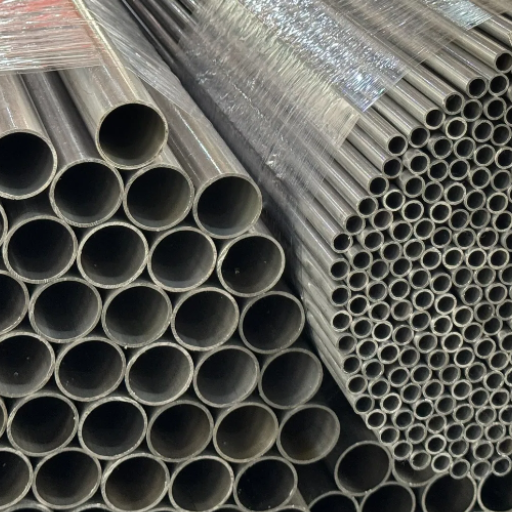
- Protect Against Corrosion: Chromoly resists the effects of corrosion quite well, but in the damp or humid surroundings, certain metal protection patents or periodic applications of rust inhibitors should further prevent surface oxidation.
- Clean Regularly: Clean works well with mild soap solutions and a soft cloth for chromoly components. Do not use abrasive cleansers, for they will damage chromoly’s surface finish.
- Inspect for Cracks or Damage: Inspection is best undertaken visually-despite reliance on engineered solutions-if it shows signs of stress, cracking, and distortion, especially in high-stress situations, such as a painted chromoly frame or aircraft components.
- Lubricate Moving Parts: Lubricants should be applied to chromoly parts when moving so as to avoid wear and nice operation.
- Store Properly: When not being used, keep chromoly material in a dry and temperature-controlled environment to reduce moisture and harsh conditions.
Through simple maintenance as above, chromoly should be able to hold up strong, durable, and reliable for further long periods of use.
Preventing Rust and Corrosion
Rust and corrosion are prime issues threatening the structural integrity and longevity of chromoly components. To curb such threats, we first need to realize and understand what promotes corrosion and that proper measures are accurately enforced. Corrosion develops because chromoly is exposed to oxygen and moisture for a prolonged period, with higher degradation factors being high humidity, salt exposure (coast or winter road salt), and acidic agents.
Identifying Signs of Fatigue
Reference Sources
-
What Is Chromoly?: This article explains Chromoly steel’s excellent durability, corrosion resistance, and high strength. It highlights its applications in industries requiring robust materials, such as automotive, aerospace, and bicycles. The article also discusses its weldability and machinability, making it a versatile choice for various demanding uses.
-
Chromoly: Properties, Benefits and Industrial Uses: This resource delves into the unique properties of Chromoly alloys, including high mechanical strength and corrosion resistance. It emphasizes its industrial applications, particularly in manufacturing critical components like gears and shafts, and its role in high-performance sectors like aerospace and automotive.
-
What is Chromoly? Properties, Uses & Strength Explained: This article provides an overview of Chromoly steel’s high strength, excellent weldability, and fatigue resistance. It discusses its popularity in demanding applications, such as race cars and bicycles, and its ability to withstand extreme conditions while maintaining performance.
Frequently Asked Questions (FAQs)
Q: What are the benefits of using chromoly?
A: Chromoly, or chromium-molybdenum steel, offers several advantages, making it a popular choice in various applications, particularly in bicycles and automotive components. Its high strength-to-weight ratio means that structures can be lighter without sacrificing durability, making it ideal for performance-oriented designs. Additionally, chromoly has excellent weldability, allowing for easy fabrication and modifications. The added chromium and molybdenum enhance the steel’s resistance to corrosion and fatigue, ensuring long-lasting performance even under stress. Overall, chromoly provides a balance of strength, flexibility, and cost-effectiveness, making it a preferred material in many industries.
Q: How does chromoly compare to regular steel?
A: When comparing chromoly to regular steel, the key differences lie in their composition and resulting properties. Regular steel, often referred to as mild steel, typically contains a lower percentage of carbon and lacks the alloying elements found in chromoly. This results in chromoly being significantly stronger and more durable than standard steel. Moreover, chromoly’s ability to withstand higher levels of stress and impact makes it preferable for high-performance applications such as racing bikes and aircraft components. While regular steel may be cheaper, the enhanced performance and longevity of chromoly can justify the higher initial investment for many users.
Q: What are common applications of chromoly?
A: Chromoly is widely used in various applications due to its strength and versatility. In the realm of cycling, chromoly is a favored material for bike frames, offering a sturdy yet lightweight option for both casual riders and competitive cyclists. Beyond bicycles, chromoly is also extensively utilized in the automotive industry for manufacturing chassis and suspension components, where high strength is critical for performance and safety. Furthermore, chromoly is commonly found in the production of tools and machinery, as it can withstand heavy use without deforming. Its presence in the aerospace industry for structural components highlights its reliability in demanding environments.
Q: Is chromoly worth the investment?
A: Investing in chromoly can be worthwhile, especially for those seeking high performance and durability. While the initial cost of chromoly products may be higher than those made from regular steel, the long-term benefits often outweigh the upfront expense. Chromoly’s strength means that products made from it tend to last longer and require fewer replacements, leading to cost savings over time. Additionally, for athletes and enthusiasts who value performance, the enhanced characteristics of chromoly can significantly improve their experience. Ultimately, the decision to invest in chromoly should consider the intended use and the expected longevity of the product.
Q: How should chromoly be maintained?
A: Maintaining chromoly products is relatively straightforward, but it does require some attention to detail. Regular cleaning is essential to prevent rust and corrosion, particularly if the item is exposed to moisture or harsh conditions. A mild detergent and water are usually sufficient for cleaning, followed by thorough drying. Applying a protective coating or wax can help shield the surface from environmental elements. Regular inspections for signs of wear or damage, especially in high-stress applications like bicycles, can help catch any issues early. Proper maintenance ensures that chromoly products continue to perform at their best for years to come.

